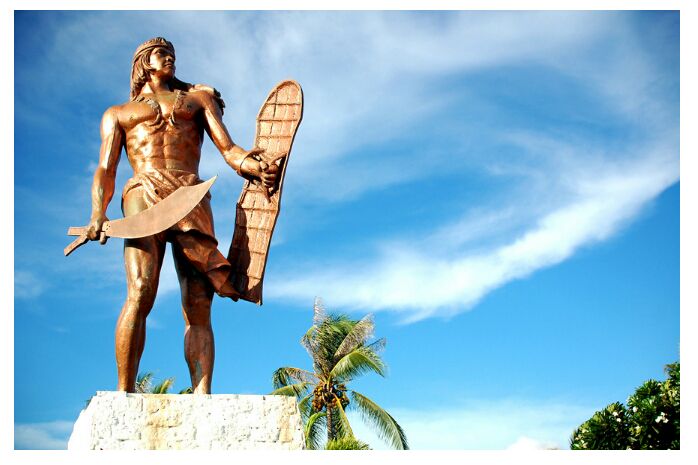

Most chiefs obeyed the order. However, Datu Lapu-Lapu, one of the two chiefs within the island of Mactan, was the only chieftain to show his opposition. Lapu-Lapu refused to accept the authority of Rajah Humabon in these matters and outright refused to help the Europeans in any way.

Rajah Humabon suggested that Magellan go to the island of Mactan and force his subject chieftain Datu Lapu-Lapu to comply with his orders. Magellan saw an opportunity to strengthen the existing friendship ties with the ruler of the Visayans region and agreed to help him subdue the resistant Lapu-Lapu.
It is widely believed that Humabon and Lapu-Lapu bore grudges toward each other and were constantly fighting for control of land. Some historians say that Magellan went to Mactan to subdue Datu Lapu-Lapu who refused to pay tribute to the Spanish colonizers.
According to the accounts of Antonio Pigaffeta, Magellan’s voyage chronicler, the Portuguese sea captain deployed 48 armoured men, less than half his crew, with swords, axes, shields, cross-bows and guns. Filipino historians note that because of the rocky outcroppings and coral near the beach, he could not land on Mactan. Forced to anchor far from shore, Magellan could not bring his ship’s firepower to bear on Lapu-Lapu’s warriors, which gave them a huge advantage.

The Death of Magellan
Spain did eventually conquer the Philippines around 40 years after this, but this is a story that is widely known in the Philippines but has been lost in the memory of Europe. Records don’t tell us what happened to Lapu-Lapu, but in Cebu tradition it is believe that when he died he turned into a human shaped rock, and fisherman to this day through coins into the water around it to thank Lapu-Lapu for letting them fish in his waters.

